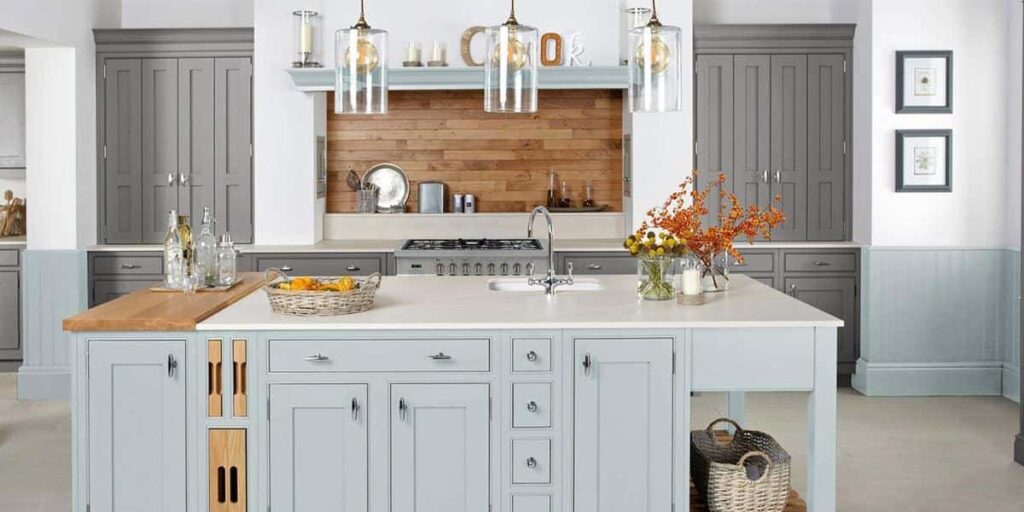Embarking on a kitchen remodel is no small feat. It requires careful planning, astute decision-making, and practical budgeting to ensure the final result aligns with one’s vision of a dream kitchen. This pursuit is not merely about aesthetic updates; it involves a profound understanding of functionality and style, integrated seamlessly into one’s lifestyle.
The remodeled kitchen should not only serve its primary function efficiently but also reflect an individual’s taste, thereby fostering an intrinsic sense of belonging.
The subsequent discussion aims to provide insightful tips for successful kitchen remodeling. It will delve into crucial aspects such as meticulous planning and budgeting strategies that can help circumvent potential pitfalls during the renovation process.
Simultaneously, it will explore various elements that merge style with functionality – from selecting materials and appliances to deciding on layout and storage solutions, all while ensuring the outcome resonates personally.
In this way, readers will be equipped with the knowledge required to transform their existing kitchens into spaces they’ve always envisioned spaces that are truly their own.
Key Takeaways
– Careful planning, decision-making, and budgeting are essential for a successful kitchen remodel.
– Creating a vision for the overall aesthetic appeal and harmonizing colors, finishes, fixtures, and materials is important.
– Seek professional advice or use online tools for visualization to help make design decisions.
– Prioritize functionality over style in remodeling, considering comfortable seating areas, efficient storage solutions, and lighting fixtures.
Planning and Budgeting for the Project
Establishing a comprehensive plan and realistic budget at the onset of a kitchen remodel is critical to ensure smooth execution and successful completion of the project. This initial planning phase requires careful examination of one’s financial capabilities, personal needs, and aesthetic preferences to determine feasible design options.
A sound financial budget should always include an allowance for unforeseen expenses that may arise during construction such as plumbing or electrical updates. Moreover, considering factors like how often the kitchen will be used for cooking or entertaining can help shape decisions about space allocation, appliance selection, and storage requirements.
In addition to determining practical elements like layout and functionality, creating a vision for the overall aesthetic appeal of the kitchen is also integral in this preparatory stage. When choosing colors, finishes, fixtures, and materials think about how they will harmonize with each other as well as with other parts of your home. Strive for a balance between trendy choices that reflect current styles and timeless designs that won’t easily become outdated—a key aspect to consider particularly if resale value is important. This process can be greatly facilitated by seeking professional advice from interior designers or using online tools which provide 3D visualizations.
While budgeting provides numerical parameters for a project’s costs, planning extends beyond monetary concerns—it encompasses everything from scheduling contractors to managing daily disruptions in your routine caused by construction work. It’s crucial not only to prepare financially but also mentally so it’s advisable to establish short-term alternatives like setting up a temporary kitchen elsewhere in the house while work takes place.
Additionally, understanding that delays might occur despite meticulous planning helps maintain realistic expectations throughout the remodeling process—thus contributing towards maintaining cohesion within your household during this transformational period.
Choosing Functional and Stylish Elements
Selecting both practical and aesthetically pleasing elements is akin to crafting a symphony, where each instrument plays its part in creating harmony. In 2019, an industry report revealed that 78% of homeowners prioritized functionality over style when remodeling their kitchens, highlighting the importance of this balance. Indeed, it is essential to contemplate how design decisions will impact everyday activities such as cooking, cleaning, and hosting gatherings.
Aesthetics are equally vital as they contribute to the overall ambiance and can significantly influence one’s experience within the space. Comfortable seating areas, efficient storage solutions, and strategically placed lighting fixtures are among the functional considerations that blend seamlessly with stylish designs. For instance, ensuring sufficient clearance for appliance doors not only facilitates ease of use but also contributes to a streamlined look. Similarly, cleverly designed cabinetry can hide unsightly necessities while maintaining a sleek appearance all across your dream kitchen. Furthermore, good-quality materials bear the dual responsibility of offering durability while enhancing visual appeal.
The selection process should not be overwhelming or burdensome; instead, it provides an opportunity for creativity and personal expression in creating an environment that supports daily routines while offering comfort and delight. Lighting choices can create dramatic effects or offer soft illumination based on individual preference without compromising utility. Likewise, careful selection of colors and finishes can elicit desired emotional responses while reflecting individual personality traits. Thus, striking an optimal balance between function and style is indeed achievable with thoughtful planning during a kitchen remodel endeavor.
